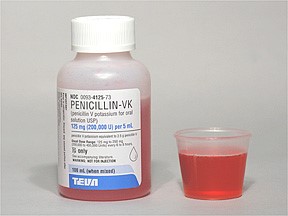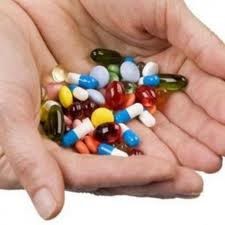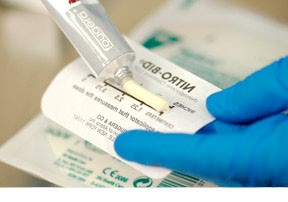2. Uses and forms of drugs. Controlled substances (narcotics). Desired or Therapeutic effect. The difference between side effects and adverse reactions.
-
2.1. Uses and form of drugs.
The purposes of drugs
- Prevent or treat disease or illness;
- Treat symptoms;
- Aid in diagnoses;
- Restore or maintain normal body functions;
- Reach desired or therapeutic effect.
Local action: When the drug is applied locally or directly to a tissue or organ.
General, or systemic action: This type of action occurs when the drug enters the bloodstream by absorption or direct injection, affecting tissues and organs, not near the site of entry.
Generic and trade names of medications.
A brand name drug is a medicine that’s discovered, developed and marketed by a pharmaceutical company.
Generic drugs have the same active ingredients as brand name drugs already approved by the Food and Drug Administration (FDA).
An example is the pain reliever Tylenol®. The brand name is Tylenol® and the generic name is acetaminophen.
-
2.2. Prescription and over the counter drugs (OTC).
Prescribed Medications
Prescribed medications are those medications that a licensed practitioner (physician, dentist, and advanced registered nurse practitioner) has ordered for treatment of an individual’s particular diagnosis or symptoms. These medications may include controlled/scheduled, non-controlled/scheduled and or over-the-counter.
Prescribed medications may be ordered on an as-needed basis (PRN), on a routine basis, or as a one-time-only order. How the prescribed medication is ordered will determine the Medication Administration Record that will be used to transcribe the order. (i.e. Routinely prescribed medications and one time only orders will be transcribed onto the Routine Medication Administration Record. Medications prescribed on a PRN basis will be transcribed on to the PRN Medication Administration Record).
Over the Counter Medications.
Over the counter medications require a licensed practitioner’s order; however, do not require a prescription. Examples of these medications would be acetaminophen, cough medications, antibiotic ointment, antacids, etc. Over the counter medications must be administered according to the licensed practitioner’s order and documented at the time of administration on an agency-specific record. This record should allow space to determine the effectiveness or ineffectiveness of the medication (i.e. Acetaminophen is given for pain; effective; ineffective). Over the counter medications should be labeled for the person for whom they are ordered.
Controlled/scheduled Medications (narcotics).
“Controlled/Scheduled medications” are those medications potentially addictive and regulated under the Controlled/Scheduled Substance Act of 1970. Controlled/Scheduled medications CANNOT be obtained without a written prescription from a licensed practitioner. It is very important that controlled/scheduled medications be handled according to the following Drug Enforcement Administration (DEA) recommendations:
- kept under double lock and key;
- separate from other medications;
- signed out each time a dose is administered;
- counted, per agency-specific policy, at a minimum daily;
- documented accurately to reflect correct count;
- disposed of according to DEA requirements.
When controlled/scheduled medicines are prescribed on an as-needed basis (PRN) (i.e. Percodan) they will be transcribed and documented as given on the PRN Medication Administration Record. When a controlled/scheduled substance is given on a routine basis (i.e. Ritalin) it will be transcribed and documented as given on the Routine Medication Administration Record. Controlled/scheduled meditations given on a routine basis must be counted along with controlled/scheduled medication give on a PRN basis.
Controlled substances (narcotics).
- A drug subject to restrictions with potential for addiction;
- A drug that in moderate doses dulls the senses, relieves pain, can cause stupor, coma, or Convulsions.
- Classified into 5 “schedules” class I=most potential for addiction, class V= least potential for addiction. There should be a source of information available to determine if a drug is on the controlled substance list.
- It is QMAP responsibility to store controlled substances under double lock, count, and document the count with another QMAP or another QMAP or Qualified Manager at the end of each shift.
Note: QMAP will need to follow your facility’s policy & procedures for counting liquid medication;
Note: Possible consequences for drug diversion are… revocation of your QMAP qualification, losing your job, being arrested, being convicted of a crime, and serving time in jail.
Non-controlled/scheduled medications are all other (both prescribed and over the counter) medications that are not regulated by the DEA, but still, require an order from a licensed practitioner. (Physician, dentist, or ARNP).
All non-controlled/scheduled medications are kept locked according to agency policies and procedures. Agency policies will address all aspects of an individual’s safety in relation to the secure storage of the medication.
Non-Controlled/Non-Scheduled Medications. All other medications prescribed, including over the counter medication are not considered to be potentially addictive by the DEA. Prescribed and over the counter medications must be locked at a minimum under a single lock. It is very important that the person administering medications read the licensed practitioner’s prescribed orders on medications to determine:
- Name;
- Time;
- Route;
- Accurate dosage.
Those medications that are given over-the-counter must be given in accordance with the agency-specific policy related to medication management. OTC medications must be given in accordance with the licensed practitioner’s order which must not require non-licensed staff to use judgment.
Non-licensed personnel will be responsible for educating themselves on medications prior to administration. This can be done by a review of the drug education sheet. This sheet comes from the pharmacy with the medication and will explain why the medication is given and the common side effects of the medication. It is recommended that all employees have an updated drug handbook or drug information/education sheet accessible at all times for review of any prescribed medications and/or over-the-counter medication.
Individual information is imperative to client safety in medication administration/management.
This includes but is not limited to the following:
- Individual’s name;
- Date of birth;
- Sex;
- Height;
- Weight;
- Allergies.
-
2.3. Different types of medications
 1. Liquid: – different types of liquid medications
1. Liquid: – different types of liquid medicationso – Solution – a liquid containing dissolved medication
o – Suspension – a liquid holding undissolved particles of medication that must be shaken before measuring and administering to resident
o – Syrup – a liquid medication dissolved in sugar water to disguise its taste
o – Elixir – a sweet alcohol-based solution in which medications are dissolved 2. Solid: – Tablet/caplet Enteric-coated tablet
2. Solid: – Tablet/caplet Enteric-coated tableto Hard, compressed medication in the round, oval, or square shape
o Some have an enteric coating or other types of coatings, which delay the release of the drug and cannot be crushed or chewed
3. Semi-solid:
o Capsule In a gelatin container that may be hard or soft. Dissolves quickly in the stomach;
o Capsule -a capsule that when swallowed releases one or more medicinal drugs over a set period;
o Suppository Small solid medicated substance, usually cone-shaped Melts at body temperature. May be administered by rectum or vagina Refrigerate as directed by the manufacturer.
 4. Topical medications applied directly to the skin surface.
4. Topical medications applied directly to the skin surface.Topical medications include the following:
o. Ointment -a semisolid substance for application of medication to the skin or eye
o Paste – a semisolid substance thicker and stiffer than an ointment containing medications
o Cream – semisolid preparation holding medication so it can be applied to the skin
o Shampoo – a liquid containing medication that is applied to the scalp and hair
o Patches (transdermal) – medication encased in a round, square, or oval disc that is affixed to the skin
o Powder – fine, ground form of medication that may be used to be swallowed, or may be used as on the skin for rashes
o Aerosol sprays – a solution that holds the medication suspended until it is dispensed in the form of a mist to spray on the skin
o Inhalant- Medication carried into the respiratory tract using air, oxygen or steam Inhalants may be used orally or nasally
-
2.4. Therapeutic effect
A therapeutic effect is a consequence of medical treatment of any kind, the results of which are judged to be desirable and beneficial. This is true whether the result was expected, unexpected, or even an unintended consequence of the treatment. An adverse effect, on the other hand, is a harmful and undesired effect
The difference between side effects and adverse reactions
Key difference: The key difference between the terms ‘side effects’ and ‘adverse effects’ is that during medication the side-effects of a given drug can be predicted or determined from the start, whereas the adverse-effects are unexpected and cannot be determined until they show their indications on the body.
A ‘side-effect’ of any substance is defined as an effect that happens beyond the intended primary or chief effect of that prescribed drug. These symptoms or side-effects are a natural consequence of the chemical reactions that take place between the drug and the body
Adverse effects are unexpected by both the patients and the doctor and may cause hamper in the procedure, medication or even the health of the patient. As a result, these effects are considered very harmful and dangerous for patients.
Medication Allergy
- A reaction occurring as the result of unusual sensitivity to a medication or other substance;
- May be the mild or life-threatening situation;
- May include rashes, swelling, itching, significant discomfort or an undesirable change in mental status, which should be reported to physician.
Role of QMAP.
- Should understand that information on allergies should be reported to the pharmacy and physician and this information is recorded in the resident’s record;
- Upon admission, important to document any known allergies or if there are no known allergies should also be documented;
- Provide immediate emergency care if severe rash or life-threatening breathing difficulties occur
Recognizing and Reporting Side Effects
- A client may have various side effects from taking certain medications;
- Side effects include but are not limited to the following;
- Change in behavior;
- Change in alertness;
- Change in eating or swallowing;
- Change in mobility;
- Skin rashes;
- When there is a change in the client, follow your facility’s policy on what to do and who to notify, which may include;
- Notifying the supervisor, health care professional and/or physician;
- NOT administering a medication when there is a change in the client without contact with the client’s physician

Observation of the client is an important step in the cycle of medication administration
- Client’s physician and health care providers often depend on the observations of direct care staff when evaluating residents;
- Also depend on QMAP to observe clients for both desired and undesired effect of medication
Side Effects
Adverse Effects
Definition
It is defined as an effect that happens beyond the intended primary or chief effect of that prescribed drug.
It is defined as the effect or reaction of prescribed medicine that is over and beyond the chief and desired action of that drug.
They are
They are temporary and resolve spontaneously.
They are long-lasting and need intervention by the doctors.
Effect
It is an expected effect by both the doctor and the patient.
It is an unexpected effect.
Nature
They are mild and self-resolving in nature.
They are harmful and dangerous in nature.
Occurrence
They happen based on medication alone.
They happen due to incorrect dosage or surgery.
Treatment
Mostly, there is no need for treatment.
They require treatment.
They are used for beneficial and therapeutic effects. They can be controlled. The symptoms can be predicted.
They can turn out to be fatal for patients. Their effect can be reduced. The symptoms cannot be predicted.
-
2.5. Medication Classification.
Medication Classification Common Use Common Names Common Adverse Effects Antibiotics *Pay close attention to any client allergies.
Infections causes by bacteria. Not uses for viral infections.
Amoxicillin; Ampicillin; Penicillin; Cefaclor (ceclor); Ceftin; Biaxin; Zithromax; Erythromycin; Doxycycline; Cipro; Levaquin; Keflex; Bactrim DS
Nausea; diarrhea; rash; yeast infections; fever; sun sensitivity Anti-Asthma Agents Asthma; respiratory
distress;
Bronchitis; COPD
Advair; Albuterol; Singulair; Ipratropium; Combivent; Triamcinolone; Flunisolide
Nervous feeling; sweating; nausea; vomiting; Antihistamines Allergic reactions (i.e hay fever) Tavist-D; Claritin; Singulair; Zyrtec; Allegra; Benadryl; Chlortrimeton Drowsiness; insomnia; weakness; Antifungal Agents Fungal infections; Nystatin; Diflucan; Nizoral; Miconazole; Lotrimin; Tinactin Headache; nausea; diarrhea; vomiting Anti-tuberculosis Prevent tuberculosis; INH; Rifampin; Pyridoxine (vitamin B-6) Headache; fatigue; dizziness; seizure; Antiviral Agents Viral infections; Ziagen; Symmetrel; Zovirax; Mood disorders; nausea; diarrhea; Analgesics Pain relief; Tylenol; Advil; Aspirin; Naprosyn; Lortab, Diclofenac; Tylenol with codeine; Percocet; Myoflex; Analgesic Cream; Capsaicin; Icy Hot Stomach upset; tinnitus; nausea; Anticoagulant/Anti- platelet
Blood thinning Warfarin (coumadin); Lovenox; Plavix; Asprin Dermatological, Bruising; Cramping; Nausea; Dizziness; Abnormal liver labs; Drug Interaction; Abnormal Bleeding; Allergy/hypersensitivity reactions Gastrointestinal 1.Antacid
2.Anti-Ulcer
3.Anti-Diarrhea
4.Stool Softeners
5. Laxatives
1.Heartburn; Acid Reflux; 2. To treat ulcer condition.
3. To stop diarrhea.
4. To relieve constipation. 5. To relieve constipation
1.Tums; Mylanta; Maalox; 2.Tagamet; Pepcid; Zantac; Prevacid; Prilosec
3.Imodium;
Lomotil;
Pepto Bismol
4.Colace; Surfak
5.Magnesium Citrate; Senna; Fleets; Metamucil (bulk laxative)
1.Constipation; bloating; 2.Dizziness;
mild diarrhea;
3.Fatigue; dry
mouth; nausea;
4.Cramping;
dependency;
5.Cramping; dependency
Neuropathy Pain/discomfort due to neuralgias Tegetrol; Gabapentin (Neurontin) Dizziness; Drowsiness; Nausea; Vomiting; Personality Changes; Blood Disorders; Food/drug Interaction; Hypersensitivity Reactions Opthalmic Irritation/infection; inflammation of the eye. Polysporin; Neosporin; Liquifilm; Maxitrol; Acular; Tobrabex; Bacitracin; Polymyxin
Burning sensation; Itching; blurred vision; Otic External Ear infections; wax removal Boric Acid; Debrox; Cortisporin Ear irritation; itching Psychotherapeutic 1. Depression; 1. Wellbutrin; Paxil; 1. Weight gain; Agents: 2. Psychosis; Zoloft; Celexa; insomnia; nervous 1. Antidepressants
behavior disorder; Lexapro feeling; 2. Antipsychotic
3. Mood 2. Abilify; Risperdal; 2. Tardive dyskensia; 3. Anti-mania Disorders Haldol; Seroquel, Zyprexa 3. Lithium; Eskalith;
sedation; 3. Tremors;
drowsiness; thirst;
Thyroid Hypothyroidism Levothyroxine (Synthroid, Levoxyl) Diarrhea; burning in the mouth; sore throat; headache; depression Vitamin/Mineral Nutritional Multivitamin; Thirst; light head; Deficiencies Vitamin A; Vitamin discolored urine B/ Riboflavin; Vitamin C/Ascorbic Faintness; diarrhea
Acid; Vitamin D; Vitamin E; Iron; Zinc; Magnesium; Selenium; thiamine Black Stools; stained teeth
Folic Acid; Calcium -
2.6. Test 2. (What did you learn?)
1. One of the purposes of drug is prevent or treat disease or illness.
True or False.
2. When is a local action of the drug occurs:
a) When the drug enters the blood stream.
b) When the drug is absorbed.
c) When the drug applied directly to tissue or organ.
d) When the drug is injected.
3. Prescribed medications may include controlled/scheduled, non/controlled/scheduled and or over the counter (OTC) medications.
True or False.
4. OTC medications required a licensed practitioner’s order and not required a prescription.
True or False.
5. Controlled/scheduled medications. (Choose all that apply).
a) kept under double lock and key.
b) counted at minimum daily.
c) subject to restriction with potential for addiction.
d) not regulated by DEA.
6. Non-licensed personal will be responsible for education themselves on medication prior administration.
True or False.
7. Medication Allergy (choose all that apply).
a) A reaction occurring as the result of an unusual sensitivity to a medication or other substance
b) May be mild or life-threatening situation.
c) May include rashes, swelling, itching, significant discomfort or an undesirable change in mental status, which should be reported to physician.
d) Nothing to worry about, will go away by itself.
8. Side Effects are a natural consequence of the chemical reactions that take place between the drug and the body, adverse effects are considered very harmful and dangerous for the patients.
True or False.
9. Antibiotics common use:
a) Infections causes by bacteria. Not use for viral infections.
b) To stop diarrhea.
c) Depression.
d) Flu, or cold infections.
10. Anticoagulant/Anti platelet medications are:
a) Tegedrol.
b) Tylenol.
c) Coumadin.
d) Vitamin K.